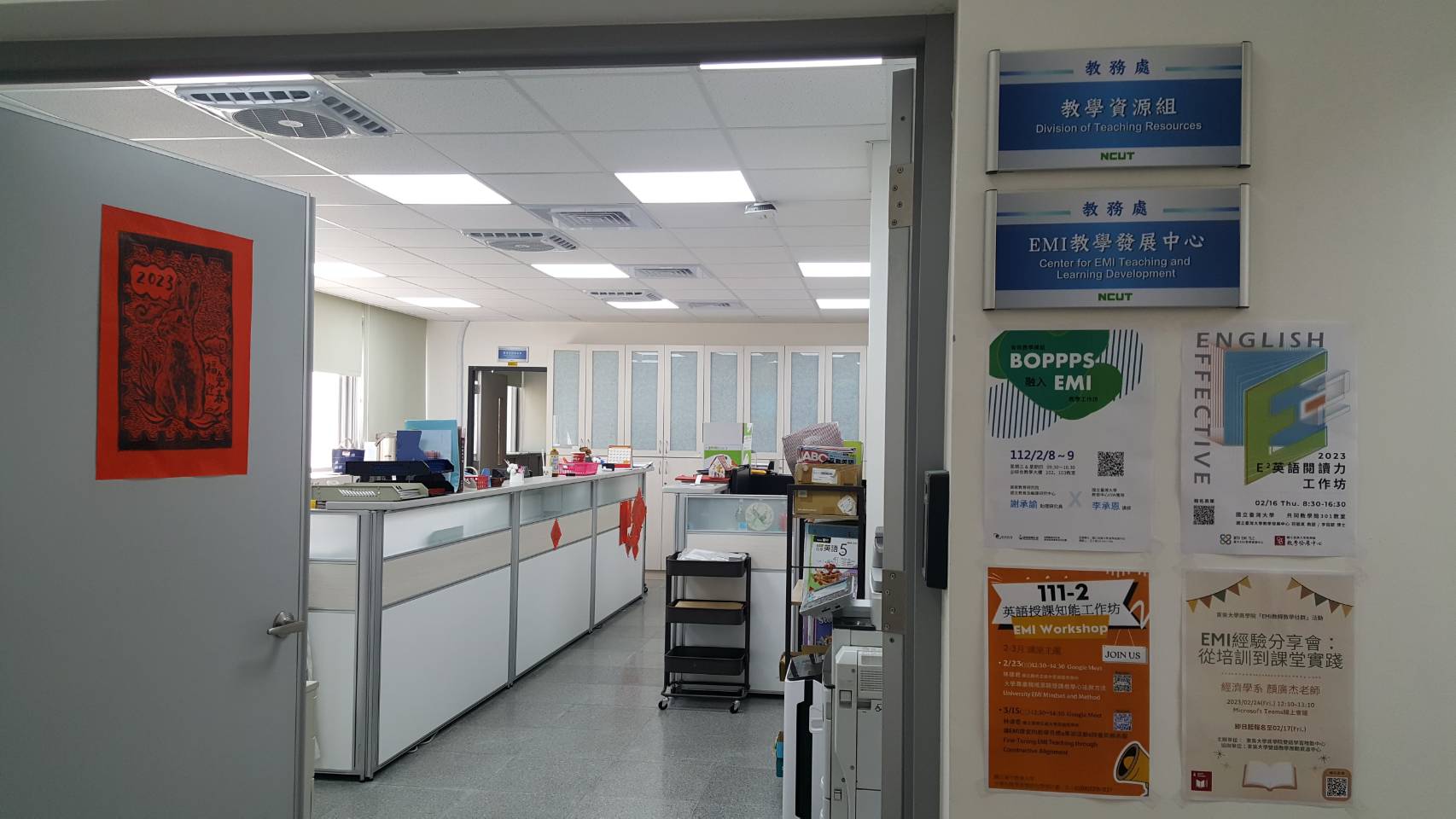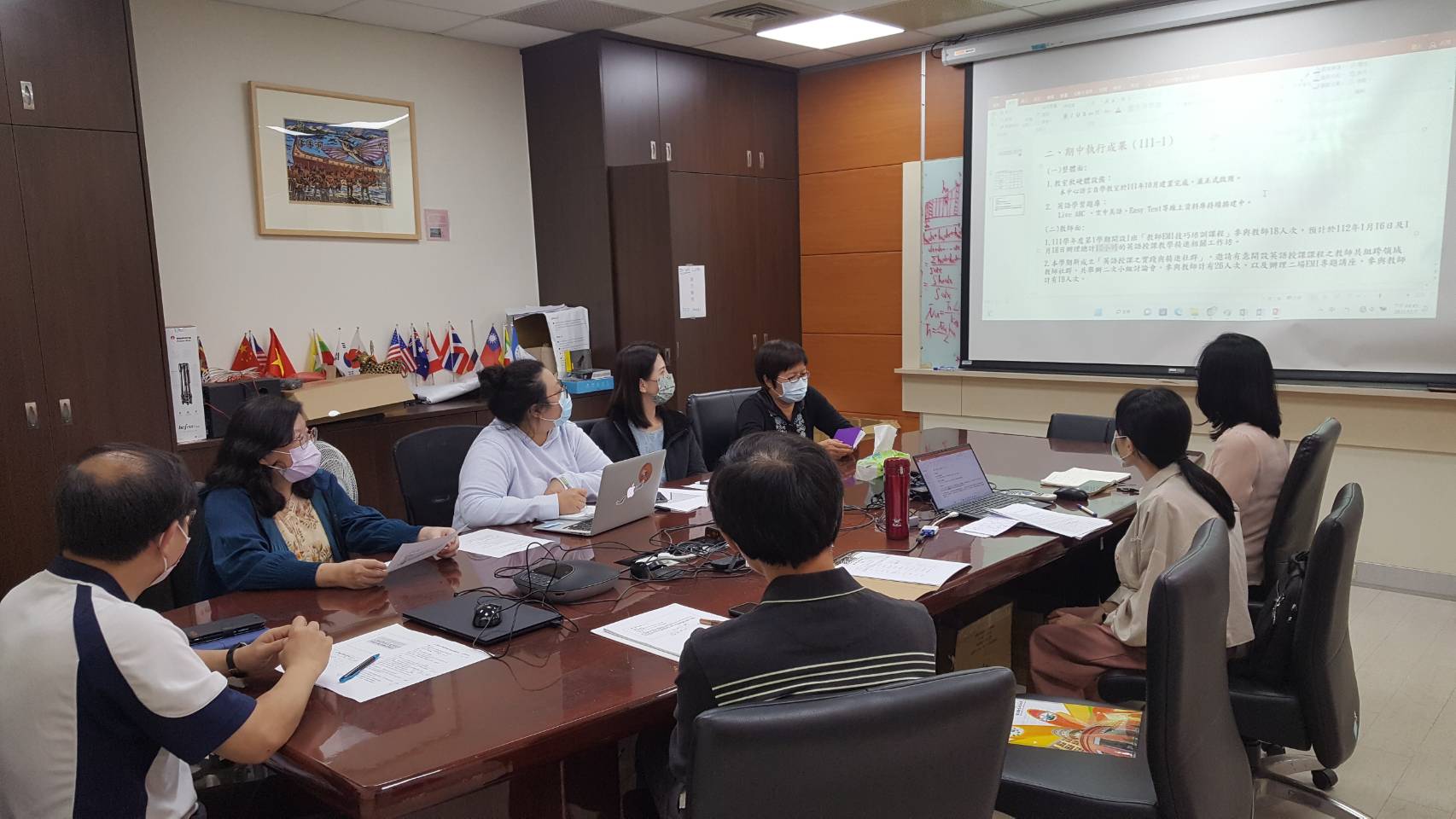Abstract
National Chin-Yi University of Technology (NCUT) has established the EMI Teaching Development Center in 2022 to implement the Program on Bilingual Education for Students in College, BEST. The overall objectives and strategies have been proved to be effective in improving students’ abilities to conduct academic research and to utilize English skills in workplaces. The characteristics of the BEST project of NCUT are shown as follows.
I. Characteristics
1. Offering EMI Courses to Meet the Needs of Corresponding Industries
EMI courses are offered to meet the needs of the current trends of the industries. In 2021 academic year, 105 English-only courses were offered, including 24 EMI courses. Compared with the 99 courses offered in the previous academic year, the number of EMI courses increased with a specific aim to facilitate students’ abilities to conduct academic research and to utilize English skills in the future workplace.
2. Providing an Environment for EMI Curriculum
To encourage the teachers in our school to offer EMI courses, NCUT has offered EMI training sessions in which 55 teachers have participated from 2021 to 2022. The 55 teachers from different departments are expected to be equipped the abilities to offer EMI courses in their own departments. So far, 25.61% of the day-school students have already taken EMI courses.
II. Results
1. The Percentage of English-only English Language Classes
In 2021 academic year, 28.03% of the English classes, including elective and required English classes, offered by the Language Center were English-only classes, which is higher than the expected result.
2. The Percentage of EMI Classes Taken by Sophomores and Graduate Students
The percentage of the EMI courses taken by sophomores and graduate students was 21.46%, which is higher than the expected result.
3. Students’ Improvement in Overall English Proficiency
The freshmen’s English proficiency is measured by a pretest prior to the freshman English classes, and their improvement in English proficiency is measured by official standardized English tests as the posttest. The results showed that 51.06% of the day-school students improved on the posttest in 2021 academic year, and that 2,430 of the students have achieved the CEF A2 level of English proficiency.
4. Students’ International Mobility
In 2021 academic year, 11 students applied for overseas study programs, and 231 students participated in international academic events.
5. Students’ Ability of Technological Inquiry
When guiding students’ theses and graduation projects, teachers encouraged students to incorporate references written in foreign languages so as to develop the ability of technological inquiry. In 2021 academic year, 186 theses and graduation projects incorporated international references, such as articles of SCI, SCIE, and SSCI.
6. Students’ Ability of Technological Innovation and Exchange
International events serve as the venues to foster the ability of technological research and innovation. The statistics showed that 163 students participated in international conferences, 74 attended international exhibitions of inventions, and 22 attended international contests.
III. The Self-assessment of the Project Implementation
1. The Institutional Level of Supportive Measurements
A. Establishing EMI Teaching Development Center:
The EMI Teaching Development Center assists the implementation of the BEST project by offering administrative support, and by investigating the teachers’ and students’ feedback on the curriculum. Meanwhile, it integrates the resources and support in school to better achieve the expected results.
B. Improving Students’ English Proficiency by the Language Center:
The Language Center facilitates students’ English proficiency through the implementation of English-ability grouping teaching in order to better meet students’ needs.
C. Offering English Training Sessions for Teachers by the Language Center:
The Language Center offers workshops for teachers to gain a clearer understanding of EMI teaching strategies in a bilingual environment.
D. Collaborating with Professional Departments to Offer EMI Courses:
To enhance students’ English ability for professional purposes, the school did a school-wide survey to invite the teachers with English-only teaching capability and to investigate the current EMI courses. By doing so, it is hoped that the previous bilingual teaching model can be transformed into EMI courses.
2. The Procedure of Self-assessment
Regular meetings were held to monitor the progress of the project. EMI Teaching Development Center helped set up the objectives and the validity during the implementation of the project. The results were then reviewed by different levels of faculty members to validate the overall accomplishments.
3. Suggestions from the Review Committee
A. The Institutional Aspect: Constructing a Better Teaching Support System
(1) Teaching counseling committee: Meetings should be held every semester to review the EMI courses and to offer teaching consultation if needed.
(2) Teachers’ annual assessment: The effectiveness of EMI courses offered by individual teacher should be included in the teachers’ annual assessment. Teachers offering highly evaluated EMI courses should be credited in teacher promotion, and teaching excellence award.
B. The Teachers’ Aspect: Enhancing Teachers’ Bilingual Teaching Training
(1) A gradual progress in teacher training: Teacher training sessions should be designed based on beginning level, intermediate level, and advanced level, and the objectives of each level should be set up accordingly. Teachers should also be encouraged to attend seminars and workshops at least once every semester.
(2) Subsidy for teaching advancement: Teachers must attend EMI training sessions, such as Self-Access Course: Oxford EMI Certificate for University Lecturers. Teachers who registered for the above training course can receive 50% of the registration fee as subsidy, and those who successfully obtained the official certificate can have their total registration fee subsidized by the school.
(3) EMI teaching community: A teacher community is held by the Language Center twice every semester, and the members of the community can share their own teaching experiences in conducting EMI courses in order to enhance their EMI teaching efficiency.
C. The Curricular Aspect: Formulating a More Solid EMI Curriculum Design
(1) Inviting teaching counselors as the members of curriculum committee: The EMI curriculum committee can include counselors from other schools to collaboratively design the content and the objectives of EMI courses. The learning outcome can then be reviewed to examine the effectiveness of EMI courses, and following measures for improvements and adjustments can be proposed accordingly.
(2) Increasing the percentage of students’ feedback: To examine the effectiveness of EMI courses from students’ perspective, the percentage of students’ feedback should be increased to 70% in order to better assess the outcome of each EMI course.

